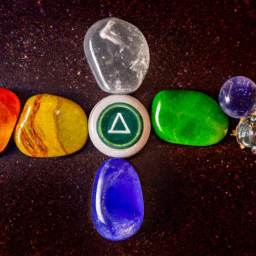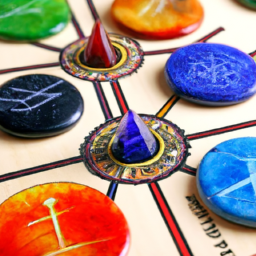Unlocking the Power of Chakra Balancing: Understanding the Symptoms
If you are someone who practices yoga or meditation, you have most likely come across the term “chakras”. These are energy centers within our body that are responsible for our physical, mental, and emotional well-being. When these chakras are out of balance, it can lead to various physical, emotional, and spiritual imbalances, causing us to feel drained, anxious, and disconnected.
Chakra balancing is a highly effective technique that helps bring these energy centers back into alignment, resulting in a sense of harmony and balance within ourselves. However, before we delve into the symptoms of chakra balancing, it is essential to understand the seven main chakras and their functions.
Understanding the Seven Main Chakras
- Root Chakra: Located at the base of the spine, this chakra is associated with our sense of security, stability, and foundation.
- Sacral Chakra: Located in the lower abdomen, this chakra is related to our creative expression, emotions, and sexuality.
- Solar Plexus Chakra: Located in the upper abdomen, this chakra is linked to our self-esteem, confidence, and personal power.
- Heart Chakra: Located in the center of the chest, this chakra represents love, compassion, and emotional balance.
- Throat Chakra: Located in the throat, this chakra is associated with our ability to communicate, express ourselves, and speak our truth.
- Third Eye Chakra: Located between the eyebrows, this chakra is linked to our intuition, imagination, and spiritual clarity.
- Crown Chakra: Located at the top of the head, this chakra represents our connection to the divine and our spiritual awareness.
Now that we have a basic understanding of the chakras let us dive into the symptoms that may indicate your chakras are out of balance.
Signs of Imbalanced Chakras:
1. Physical Symptoms: Each chakra is associated with specific organs and body parts. Therefore, any physical issues in these areas may be a sign of an imbalanced chakra. For example, digestive problems may indicate an issue with your solar plexus chakra, while respiratory issues may point towards an imbalanced heart chakra.
2. Emotional Instability: If you find yourself experiencing intense emotional fluctuations, it may be a sign that one or more of your chakras are out of balance. For example, an overactive sacral chakra can lead to mood swings, while an underactive throat chakra can cause difficulty expressing emotions.
3. Mental Clarity: Each chakra also has a connection to our mental and psychological well-being. An imbalanced third eye chakra can lead to a lack of focus and clarity, while a blocked crown chakra can lead to a disconnect from our inner wisdom and intuition.
4. Lack of Creativity: As mentioned earlier, the sacral chakra is associated with creativity and self-expression. When this chakra is out of balance, it can lead to a lack of inspiration and difficulty tapping into our creative potential.
5. Difficulty in Relationships: Our heart chakra is closely tied to our ability to give and receive love, trust, and compassion. An imbalanced heart chakra can result in challenges in maintaining healthy relationships.
These are just a few of the many symptoms that may indicate your chakras are out of balance. However, the good news is that chakra balancing can help bring back harmony and balance to these energy centers, resulting in a more aligned and vibrant life.
Tools for Chakra Balancing:
1. Meditation: Simply sitting in stillness and focusing on your breath can help bring awareness to your chakras and begin the process of balancing them.
2. Yoga: Practicing yoga asanas or postures that focus on specific chakras can help release any blockages and bring balance to those energy centers.
3. Healing Crystals: Each chakra is associated with a particular crystal that can help balance its energy. Using these crystals during meditation or wearing them as jewelry can aid in the chakra balancing process.
4. Aromatherapy: Essential oils have powerful healing properties and can be used to balance chakras. For example, lavender and chamomile are beneficial for the third eye chakra, while rose oil is helpful for the heart chakra.
5. Sound Therapy: Vibrational sounds, such as Tibetan singing bowls or chanting mantras, can also help balance chakras by stimulating their energy.
Conclusion:
Chakra balancing is a transformative practice that can help us connect with our inner selves and find balance and harmony in all aspects of our life. Understanding the symptoms of imbalanced chakras and using various tools such as meditation, yoga, crystals, aromatherapy, and sound therapy can guide us on the path to a more aligned and fulfilled life. So, take some time to tune in to your chakras, and embark on this journey of self-discovery and healing.





I had no idea there were so many symptoms associated with chakra balancing!
Great post!
great article, so informative!
Wonderful info for anyone interested in chakra balancing and energy work!
Sounds like a great way to promote overall wellbeing!
Amazing read! Very helpful to learn about the different chakra balancing symptoms.